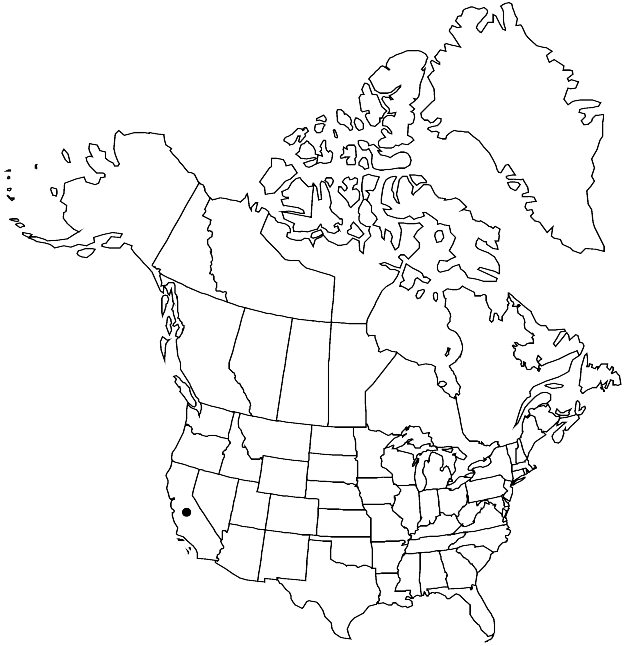Difference between revisions of "Streptanthus longisiliquus"
Madroño 54: 94, fig. 1. 2007.
FNA>Volume Importer |
FNA>Volume Importer |
(No difference)
| |
Revision as of 22:51, 16 December 2019
Perennials; (short-lived, caudex simple or few-branched); (glaucous), usually glabrous throughout, (except sepals pubescent, sometimes also petioles). Stems branched, 2.2–12(–15) dm. Basal leaves rosulate (in juvenile plants); petiolate (petioles usually glabrous, rarely ciliate); blade obovate to spatulate, 3.5–10 cm, margins entire. Cauline leaves: blade broadly oblong to ovate or suborbicular, 2.5–10 cm × 10–35 mm, (smaller distally), base amplexicaul, margins entire. Racemes ebracteate, (lax). Fruiting pedicels divaricate-ascending, (straight), 5–10 mm. Flowers: calyx subcampanulate; sepals yellow-greenish proximally, purple distally, oblong, 6–8 mm, not keeled, (with subapical tuft of hairs); petals purple or brownish (claw yellow-green), 8–12 mm, blade 1–3 × 0.5–0.8 mm, margins not crisped, claw 6–10 mm, wider than blade; stamens in 3 unequal pairs; filaments (distinct): abaxial pair 6–8 mm, lateral pair 4–6 mm, adaxial pair 7–10 mm; anthers (all) fertile, 3.5–5 mm; gynophore 0.3–1 mm. Fruits descending, smooth or slightly torulose, arcuate, flattened, 5–13(–15) cm × 2–2.5 mm; valves each with prominent midvein; replum straight; ovules 50–82 per ovary; style 1.5–3.5 mm; stigma entire. Seeds oblong, 2.2–3 × 1.4–1.8 mm; wing 0.1–0.4 mm wide, continuous.
Phenology: Flowering May–Jul.
Habitat: Openings in pine forests, oak woodland
Elevation: 400-1700 m
Discussion
Streptanthus longisiliquus is known from Butte, Shasta, and Tehama counties.
Selected References
None.
